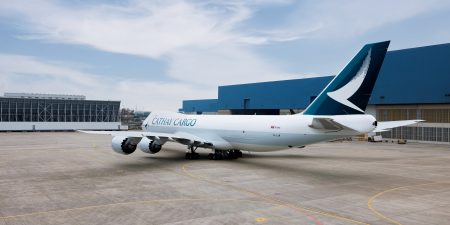George, tell us a little more about yourself.
George: I’m 39, from the UK and moved to Asia in 2005 when I joined the Swire Group. I started in the shipping division – the China Navigation Company, part of John Swire & Sons. I spent 11 years there in a variety of roles, latterly on vessel acquisition with a specific focus on building a fleet for a newly formed division, Swire Bulk. In 2016, I moved to Cathay Pacific, first as Country Manager in Indonesia. I then returned to Hong Kong a couple of years ago to become Head of Revenue Management Operations.
How will you draw on your past sea-freight experience in your new role?
George: The drivers are basically the same – the global economy, supply and demand, and changing procurement patterns. There's always a tension between air and sea freight. Given the choice, people would move their goods by sea because costs can be managed better. Air freight comes into play for higher-value goods needed sooner, for just-in-time manufacturing, or if the supply chain is put out of kilter, which we’ve seen recently with PPE (personal protection equipment) shipments.
How does your revenue management experience factor into the job?
George: The shared aim of the passenger and cargo divisions of our business is to maximise revenue for the capacity you’re operating. On the passenger side, the scale and number of sales and transactions means distribution channels are bigger and there are more of them, especially with the growth of online travel booking. Cargo is quite behind in some respects, but as e-commerce grows and freight forwarders start to offer better services for online bookings, we’re moving from an email and telephone service to a digital-first service.
Is that part of the vision for the business?
George: Yes, our offerings should be as good as anything offered by the market. While you might expect there to be tension between maximising revenue and meeting customer needs, what I have seen is that if you have the right interaction and meet real customer needs, it’s possible to achieve both. One of our long-term objectives is ‘innovation’, led by digitisation. With the growth of e-commerce, we have to ensure that we’re on top of this. Digitisation will enable us to understand our customers better and to offer higher-touch service, but also to check our own consistency and quality. It’s giving customers the channels to access us in the way they want, and for us to have more informed conversations with them using data. For example, our sales teams will have a better understanding of the commercial and operational picture in a customer relationship.
There will once more be a Director Cargo – will that influence your role?
George: It’s a positive move and reflects the importance of cargo to Cathay Pacific. In ordinary times, cargo generates 25 to 30 per cent of Cathay’s revenues. Having a cargo representative on the executive team is useful, and the best way to maximise revenues is to ensure that the commercial side is operating in harmony – not just with the operational side, but all the other parts of the business.



